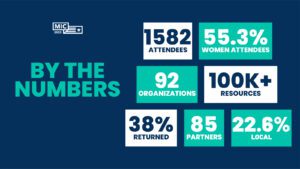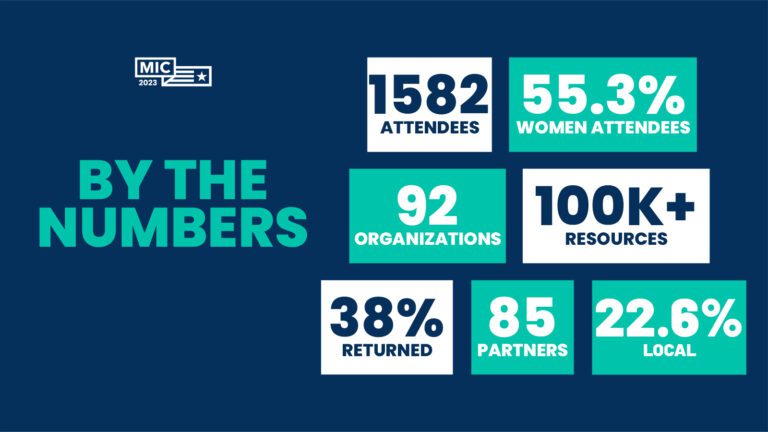

Female founder sets out to disrupt 3D printing industry
- by
- Andrea Downing Peck
While many innovators aim to “build a better mousetrap,” Snabes’ goal was to manufacture products faster and less expensively in developing countries using cutting-edge 3D technology — a process that makes physical objects from three-dimensional digital models.
Snabes’ Texas-based startup pioneered the world’s first affordable, human-scale industrial 3D printer. Its latest breakthrough is the Gigabot X, a 3D printer that turns recyclable plastic into products ranging from furniture to COVID-19 face shields. Put another way, it turns trash into treasure.
But toilets were the inspiration for Snabes’ initial foray into human-scale 3D printing. Snabes and re:3D Co-Founder Matthew Fiedler met as co-workers at NASA’s Johnson Space Center (JSC) in Houston and volunteered with the JSC chapter of nonprofit Engineers Without Borders. On a trip to Rwanda, Snabes became convinced an affordable “toilet-sized” 3D printer could be game-changing for third-world countries. Necessities such as composting toilets and medical equipment could be made locally rather than obtained through donations, which often missed the mark.
 “In Africa, in particular, we saw a lot of equipment and solutions get abandoned because they’re a poor cultural fit, they can’t be maintained, they’re the wrong voltage,” Snabes points out. “The list goes on and on.”
“In Africa, in particular, we saw a lot of equipment and solutions get abandoned because they’re a poor cultural fit, they can’t be maintained, they’re the wrong voltage,” Snabes points out. “The list goes on and on.”
In late 2012, re:3D shifted from brainstorming concept to reality when the founders won a $40,000 prize and mentorship package from Start-Up Chile, a Chilean-government-backed startup accelerator. Within weeks, Snabes quit her job at NASA — where she had risen to social-entrepreneur-in-residence — and moved to Santiago, while Fiedler began dedicating his days to creating a Gigabot prototype.
A Kickstarter campaign — tied to the Gigabot’s debut at the 2013 South by Southwest Festival in Austin, Texas — was funded in 27 hours and netted re:3D more than $250,000. Widespread tech-industry media coverage generated more good news. Orders rolled in from 23 countries.
Despite re:3D’s profitability, bootstrapping has been a necessity. Snabes notes the company’s pledge to sell their American-made open-source hardware as “cheap as possible” while offering customers lifetime support and upgradeability is a hard sell with venture capitalists. The company also gives away one $11,000 Gigabot for every 100 sold.
“All those things in some ways made us unique and that’s probably why people fought and advocated for us over the years,” Snabes, who has led re:3D to a host of prizes, including WeWork’s $1Million Creator award, said. “But it also meant I couldn’t shake someone’s hand and take their money and tell them they’re going to get a 10X [investment multiple] return in 18 months.”
Snabes honed her entrepreneurial skills early. In elementary school, she pulled wiggly teeth from elementary classmates’ mouths in exchange for their lunch money — a ploy to speed the Tooth Fairy’s arrival. But she labels herself an “accidental entrepreneur.” Since childhood, her dream has been to fly in space, not build businesses. Her quest to become an astronaut propelled her to study biosciences in college and has guided many of her career decisions, from serving as a research associate at a biotech company to joining the Air National Guard.

A decade ago, Snabes was on lunch break from her job as a JSC Space Life Sciences strategist when she decided to join the military.
“I realized I would love to scale my ability to serve and, secondly, I had applied to be an astronaut,” Snabes explained. “When I began working for the space agency, I learned a number of astronauts had military backgrounds. It helps you gain a security clearance and be more qualified to be an astronaut.”
While her dream of becoming an astronaut has not yet been realized, Snabes credits the military for making her a better entrepreneur by teaching her pragmatism and prioritizing.
“You’re put in situations where you have to prioritize a lot of things,” Snabes said. “You can’t do them all. Something has to go away. That’s very similar to how things are in the start-up world or running a small business.”
But that doesn’t mean combining military service and entrepreneurship has been easy.
Inevitably, Snabes says, she ends up deployed or activated when “it is not the best timing for the company.” She was deployed to South Korea when Hurricane Harvey hit the company’s Houston factory and was activated to support the military’s COVID-19 response just as the pandemic played havoc with re:3D’s shipping routes and cashflow.
“The most extreme is when you have to wear two hats, but that is what it is,” Snabes said. “That’s what you signed up for.”
In entrepreneurship, Snabes maintains the secret sauce is no secret.
“We’re seven years in and I still work as many hours or more than I did in the beginning,” she said. “It’s endless. There’s always more you can be doing, especially right now. There’s no playbook for how to run a U.S. manufacturing company during a pandemic.”
Her advice to would-be military entrepreneurs is simple as well: Don’t let the pursuit of perfection become a roadblock to launching your business.
“Veterans or reservists want to get it right the first time, which is great because they believe in excellence,” Snabes said. “What’s harder for military members is to get their product out there. The first Gigabot on Kickstarter is ugly…, but the message we had for the community is you could make this beautiful.”
Visit https://re3d.org/ to learn more about Samantha Snabes’ work in the 3D industry.
YOU MAY ALSO LIKE
MIC Updates

Behind The Numbers Of MIC 2023














